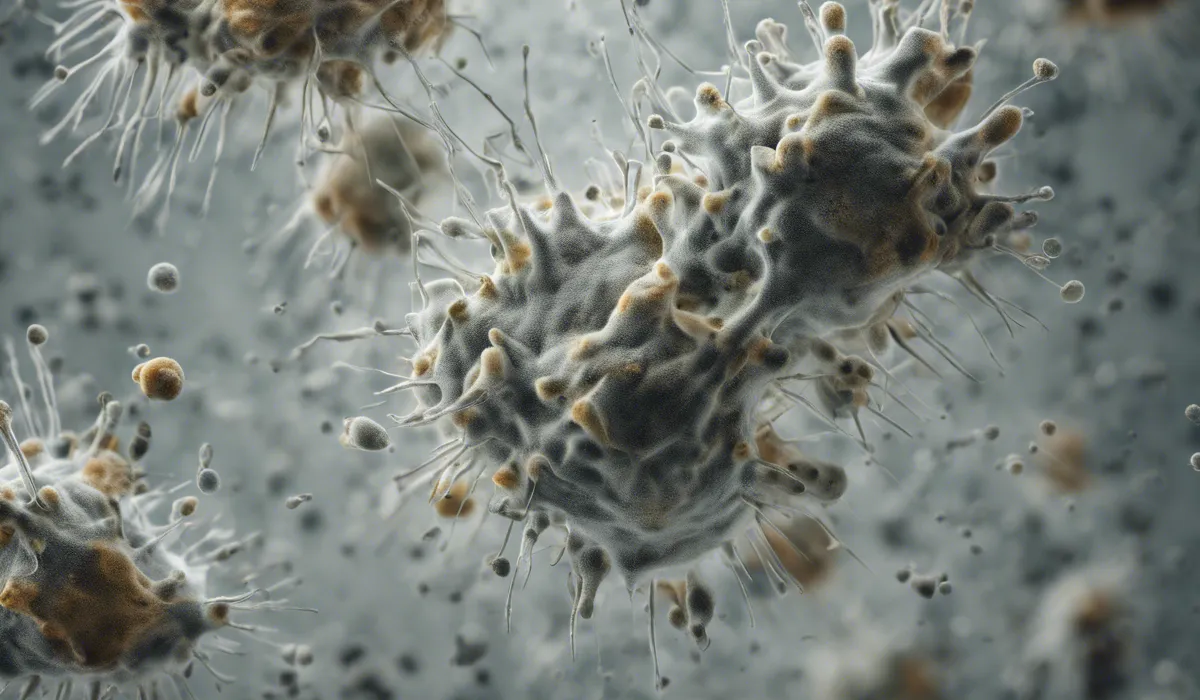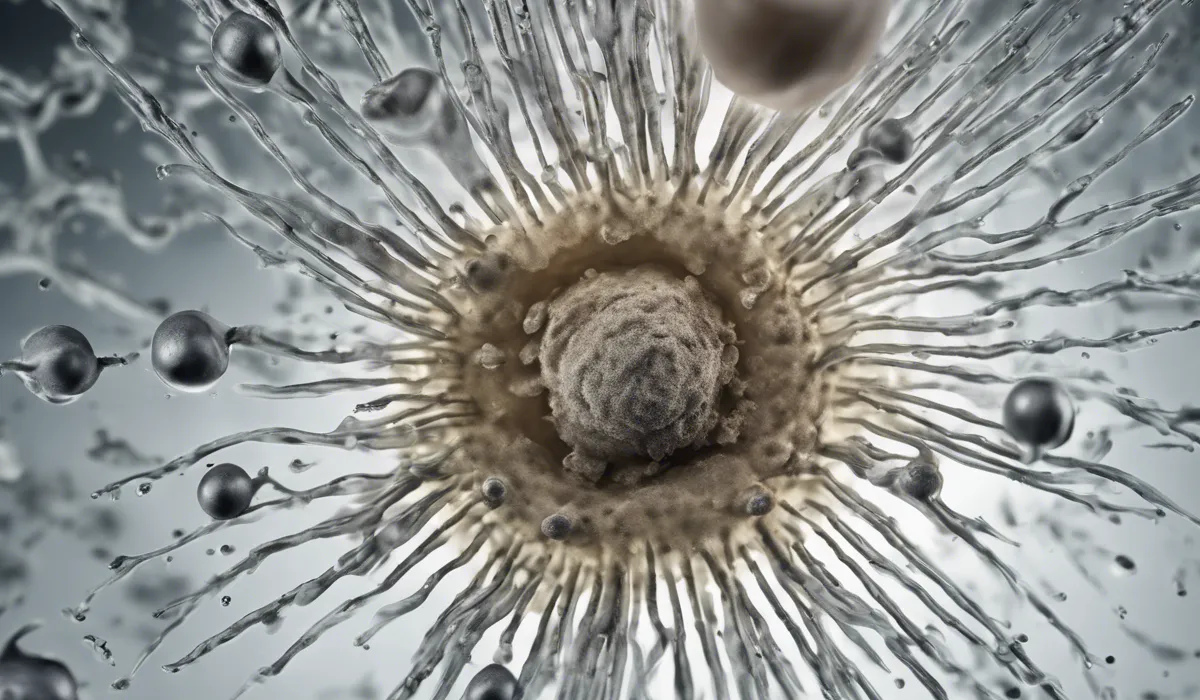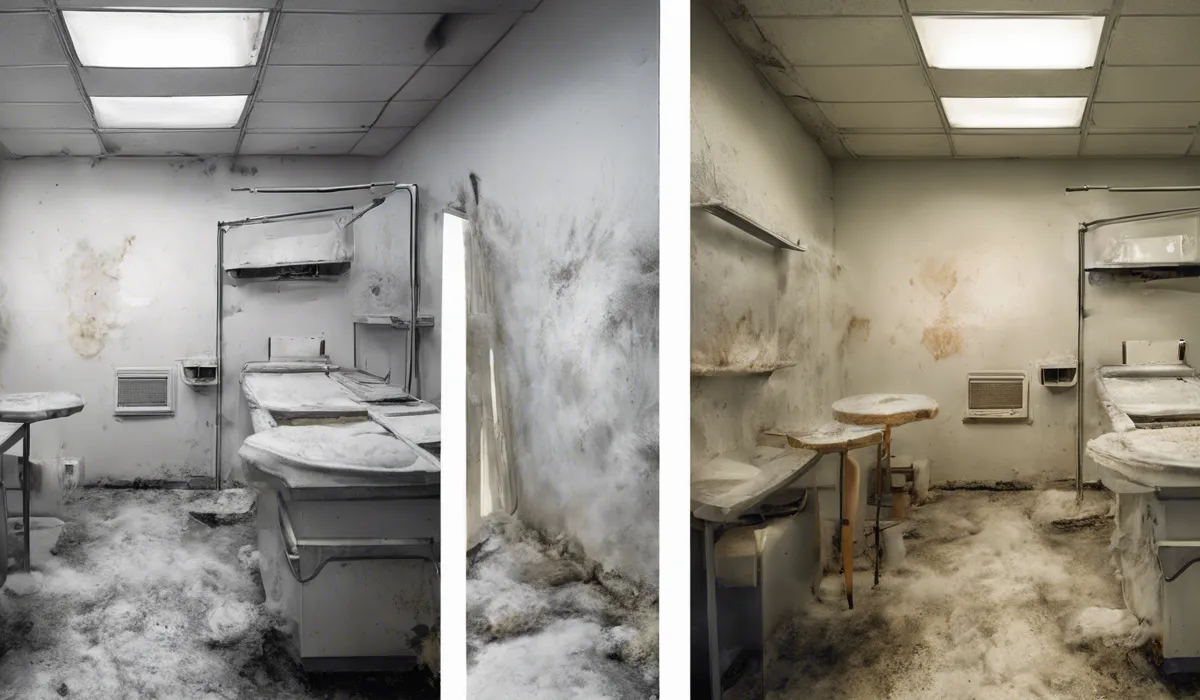To test for mold toxicity, consult a healthcare provider for a blood test, which can detect mold-specific antibodies.
They may also recommend a urine mycotoxin test or a skin prick test to assess sensitivity to mold. Always seek professional medical advice for accurate diagnosis.
Recognizing Symptoms of Mold Toxicity

Understanding Mold Toxicity
Mold toxicity occurs when a person inhales or ingests mold spores that produce harmful substances known as mycotoxins.
These toxins can affect health significantly. Mold is a type of fungus that can grow on various surfaces, especially in damp and poorly ventilated areas.
Identifying Common Symptoms
People exposed to mold may experience a range of symptoms. These can include coughing, wheezing, and nasal congestion.
Some might feel eyes that are itchy or watery. Others might notice skin irritation or rashes. Headaches, fatigue, and memory problems are also symptoms some individuals report.
Allergy vs. Toxicity Symptoms
Mold allergies typically cause immediate reactions similar to other allergies, such as sneezing and itchy eyes.
Mold toxicity, however, often results in chronic, systemic health issues that can be more severe, like persistent headaches, muscle pain, and mood changes.
Long-Term Effects of Mycotoxins
Long-term exposure to mycotoxins can lead to more serious conditions. These include respiratory diseases, immune system disorders, and neurological problems.
Continuous exposure without treatment can cause symptoms to worsen over time.
Risk Factors for Mold Toxicity
Some individuals are more at risk for developing mold toxicity. People with weakened immune systems, allergies, or existing respiratory conditions are more susceptible.
Living or working in damp environments can also increase the risk of exposure to mold.
Methods for Testing Mold Exposure and Toxicity

Home and Workplace Inspections
Having a professional inspect your home or workplace for mold is a crucial first step. Inspectors can find hidden mold and provide advice on how to eliminate it.
They use specialized tools and techniques to detect mold that may not be visible to the naked eye.
Testing Air Quality
Professionals can test the air for mold spores. They use devices that capture air samples and later analyze them in a lab.
This testing can help determine the types of mold present and the concentration of spores in the air.
Surface Mold Testing
Surface testing involves taking samples from various surfaces where mold might grow. These samples are then examined for mold growth.
This method helps identify mold species and the extent of an infestation.
Blood Tests for Sensitivity
Doctors can order blood tests to check for antibodies against mold. These tests can indicate if a person has an allergy or sensitivity to mold.
They measure the immune system’s response to mold exposure.
Urine Mycotoxin Tests
Urine tests can detect the presence of mycotoxins, which are toxins produced by certain molds.
These tests can help determine if a person has been exposed to toxic mold and is suffering from mold toxicity.
Medical Imaging
Medical imaging, such as MRIs or CT scans, can be used in severe cases. They help doctors see the effects of mold toxicity on the body, especially in the lungs and brain.
Imaging is usually done when symptoms are severe and persistent.
Treatment and Management of Mold Toxicity

Available Medical Treatments
Medical treatments for mold toxicity might include prescription antifungal medications. Doctors might also prescribe nasal sprays or inhalers for respiratory symptoms.
In severe cases, more intensive treatments like immunotherapy or even hospitalization may be necessary.
Natural Remedies and Detox
Some people find relief through natural remedies and detoxification methods. These can include dietary changes, supplements, and the use of air purifiers.
However, it is crucial to consult a healthcare provider before starting any natural remedy or detox program.
Removing the Source of Mold
Eliminating mold at its source is vital for treatment and to prevent future health issues. This includes repairing water leaks, reducing indoor humidity, and removing contaminated materials from the environment.
Preventing Mold Growth
To prevent mold growth, keep indoor spaces dry and well-ventilated. Use dehumidifiers in damp areas and clean up any water damage promptly.
Regularly inspecting your home for signs of mold can also help prevent an infestation.
Seeking Professional Medical Advice
If you suspect mold toxicity, it is important to see a healthcare provider. They can offer an accurate diagnosis and recommend appropriate treatment.
Never ignore persistent symptoms, as mold toxicity can have serious health consequences if left untreated.
FAQs About Testing for Mold Toxicity
How can I determine if I’m affected by mold toxicity?
Consult a healthcare provider for a blood test to detect mold-specific antibodies, which can indicate mold toxicity.
What type of blood test is used to test for mold toxicity?
A blood test can be performed to identify the presence of mold-specific antibodies that suggest mold exposure or toxicity.
Are there any other tests besides a blood test to check for mold exposure?
Yes, a healthcare provider may recommend a urine mycotoxin test or a skin prick test to further assess mold sensitivity or exposure.
Is a urine mycotoxin test reliable for detecting mold toxicity?
A urine mycotoxin test can be used to detect the presence of mycotoxins in the body, which are toxins produced by certain molds, but its reliability can vary and professional medical interpretation is essential.
Should I do a skin prick test for mold sensitivity?
A skin prick test may be recommended by a healthcare provider to determine if you have an allergic sensitivity to mold, which is different from mold toxicity.
Final Thoughts
To determine mold toxicity, a blood test can identify mold-specific antibodies, while a urine mycotoxin test may analyze the presence of toxins.
Additionally, a skin prick test can gauge mold sensitivity. Professional medical advice is crucial for an accurate diagnosis of mold exposure and its potential health impacts.
